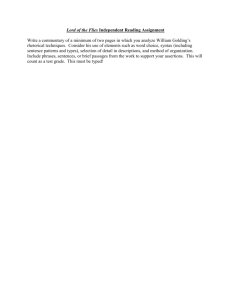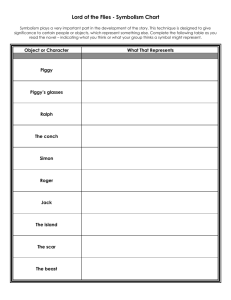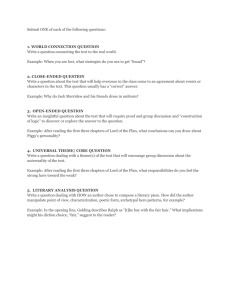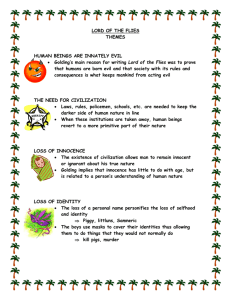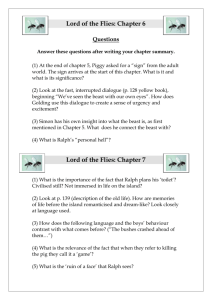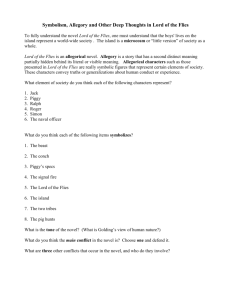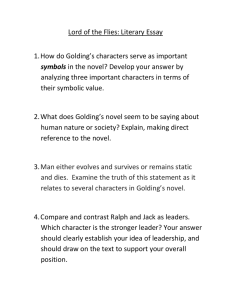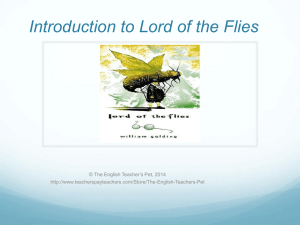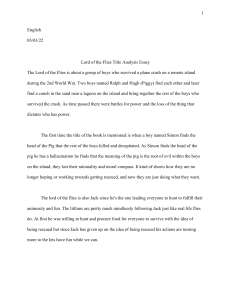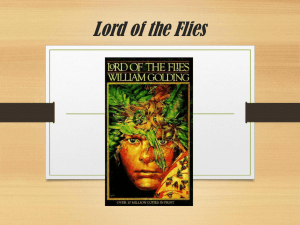William Golding
advertisement
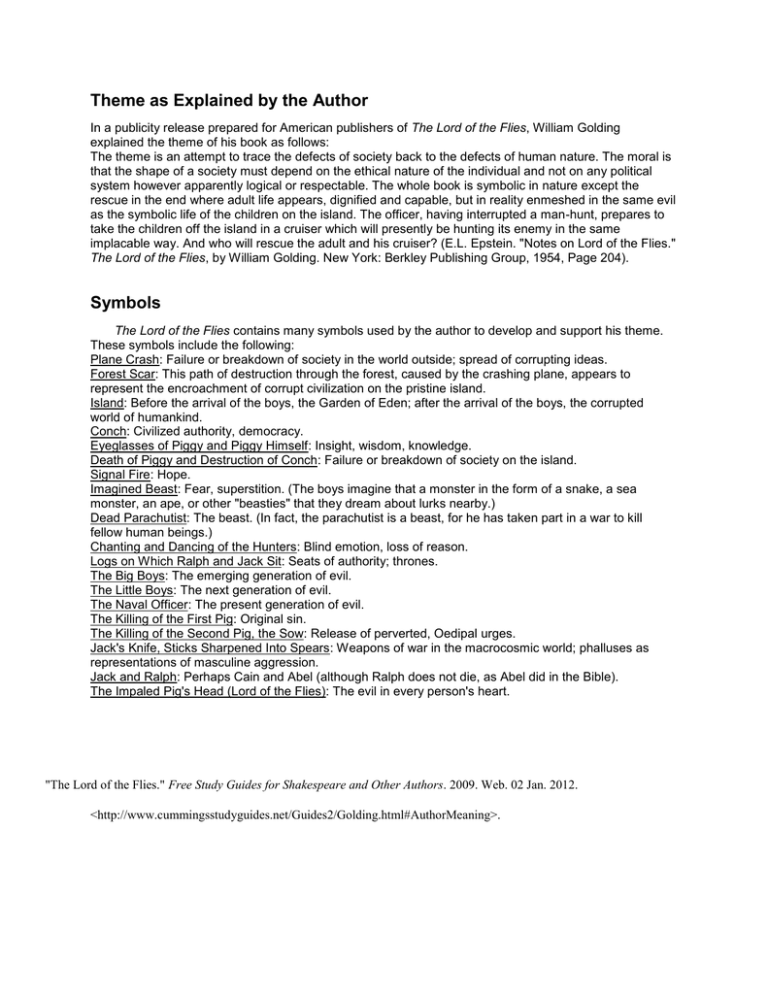
Theme as Explained by the Author . In a publicity release prepared for American publishers of The Lord of the Flies, William Golding explained the theme of his book as follows: The theme is an attempt to trace the defects of society back to the defects of human nature. The moral is that the shape of a society must depend on the ethical nature of the individual and not on any political system however apparently logical or respectable. The whole book is symbolic in nature except the rescue in the end where adult life appears, dignified and capable, but in reality enmeshed in the same evil as the symbolic life of the children on the island. The officer, having interrupted a man-hunt, prepares to take the children off the island in a cruiser which will presently be hunting its enemy in the same implacable way. And who will rescue the adult and his cruiser? (E.L. Epstein. "Notes on Lord of the Flies." The Lord of the Flies, by William Golding. New York: Berkley Publishing Group, 1954, Page 204). . Symbols . .......The Lord of the Flies contains many symbols used by the author to develop and support his theme. These symbols include the following: Plane Crash: Failure or breakdown of society in the world outside; spread of corrupting ideas. Forest Scar: This path of destruction through the forest, caused by the crashing plane, appears to represent the encroachment of corrupt civilization on the pristine island. Island: Before the arrival of the boys, the Garden of Eden; after the arrival of the boys, the corrupted world of humankind. Conch: Civilized authority, democracy. Eyeglasses of Piggy and Piggy Himself: Insight, wisdom, knowledge. Death of Piggy and Destruction of Conch: Failure or breakdown of society on the island. Signal Fire: Hope. Imagined Beast: Fear, superstition. (The boys imagine that a monster in the form of a snake, a sea monster, an ape, or other "beasties" that they dream about lurks nearby.) Dead Parachutist: The beast. (In fact, the parachutist is a beast, for he has taken part in a war to kill fellow human beings.) Chanting and Dancing of the Hunters: Blind emotion, loss of reason. Logs on Which Ralph and Jack Sit: Seats of authority; thrones. The Big Boys: The emerging generation of evil. The Little Boys: The next generation of evil. The Naval Officer: The present generation of evil. The Killing of the First Pig: Original sin. The Killing of the Second Pig, the Sow: Release of perverted, Oedipal urges. Jack's Knife, Sticks Sharpened Into Spears: Weapons of war in the macrocosmic world; phalluses as representations of masculine aggression. Jack and Ralph: Perhaps Cain and Abel (although Ralph does not die, as Abel did in the Bible). The Impaled Pig's Head (Lord of the Flies): The evil in every person's heart. "The Lord of the Flies." Free Study Guides for Shakespeare and Other Authors. 2009. Web. 02 Jan. 2012. <http://www.cummingsstudyguides.net/Guides2/Golding.html#AuthorMeaning>.
